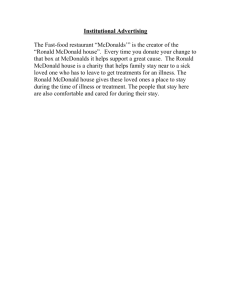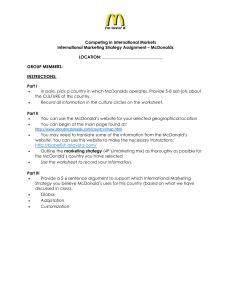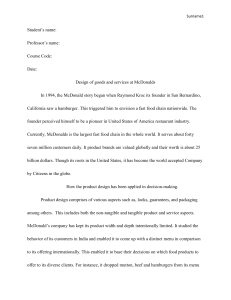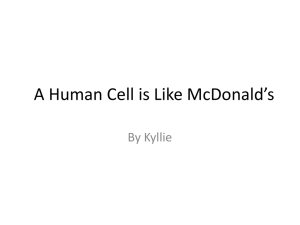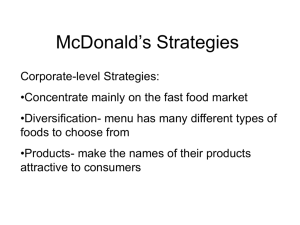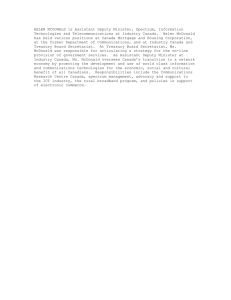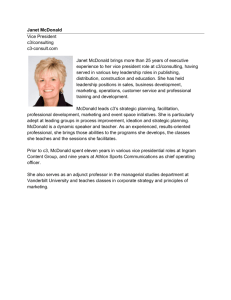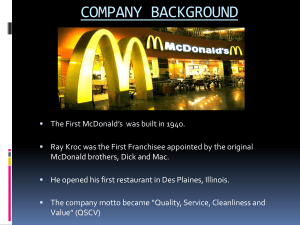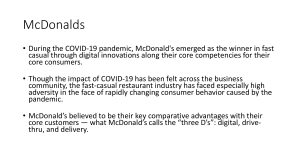File
advertisement
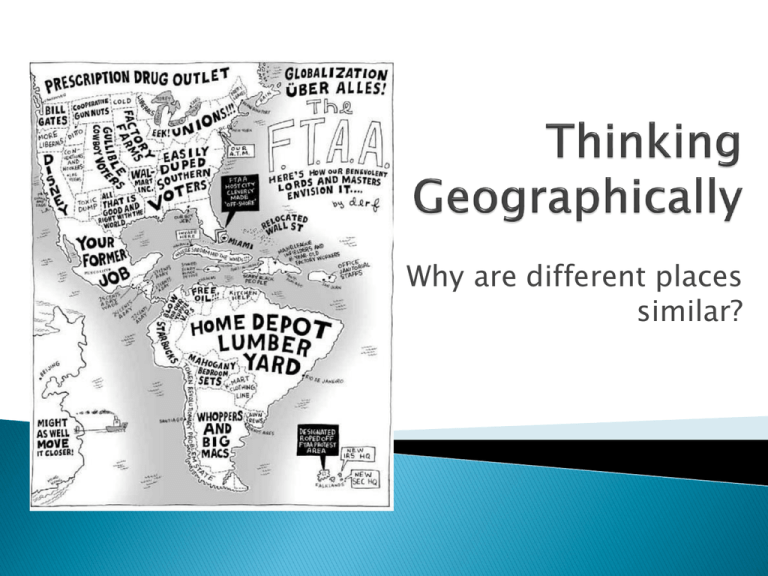
Why are different places similar? Local scale = unique features Global scale = broad patterns Globalization – Action or process that involves the entire world and result in making something worldwide in scope (scale of the world is shrinking) *interdependence *integrated ◦ Economic ◦ Cultural Most economic activities undertaken in one region are influenced by decision makers located elsewhere Crops, factories etc. Transnational Corporations Ease of movement Increased specialization ◦ Local labour force Fig. 1-17: The Denso corporation is headquartered in Japan, but it has regional headquarters and other facilities in North America and Western Europe. People around the world have the same aspirations…. What are they???? Local culture is being threatened (food, clothing, religion, language etc.) Gap is closing in McDonald's is seen as a part of most developed economies McDonald's is to close its business in Iceland because the country's financial crisis has made it too expensive to operate its franchise. The fast food giant said its three outlets in the country would shut - and that it had no plans to return. Besides the economy, McDonald's blamed the "unique operational complexity" of doing business in an isolated nation with a population of just 300,000. Iceland's first McDonald's restaurant opened in 1993. 'No sense‘ For a kilo of onion, imported from Germany, I'm paying the equivalent of a bottle of good whisky McDonalds feeds 62 million ppl/day ◦ 75 hamburgers every second $32 billion revenue makes it 68th largest economy in the world (richer than most countries) World’s largest toy distributor For the next 3 years, a McDonalds will open every day in China McDelivery in 18 countries Why are people, objects and activities distributed the way that they are When & Why vs. Where & Why Arrangement of a feature in space Density: Frequency with which something occurs ↑ pop. Doesn’t mean ↑ density NOT related to poverty ◦ Concentration: Extent of a feature’s spread over space Clustered vs. dispersed ◦ Pattern: Geometric arrangement of objects in space Fig. 1-19: The changing distribution of North American baseball teams illustrates the differences between density and concentration. Increased accessibility Estimated that no more than 10% of the cultural items of any society are traceable to innovations created by its members & that 90% come through diffusion We know more, faster Distance Decay – the farther away 2 things are, the less likely they will interact Spread of a characteristic (originates at the ‘hearth’) Relocation – physical movement of people *migration Religion (Christianity in NA) No increase in frequency Expansion – movement of idea/innovation/trait (snowballing), Remains strongest in place of origin Hierarchal - Birkenstocks, Sushi (leapfrog) Contagious - Disease (wavelike, without regard) Stimulus – Hamburgers in India, Reindeer in Siberia, Use of Facebook Plastic Surgery High Fashion Spread of English language Skateboards Reduction in time it takes for something to reach another place.
